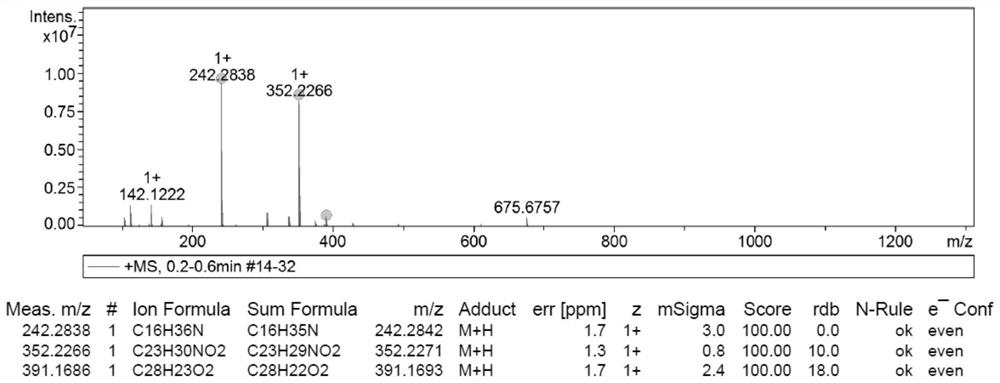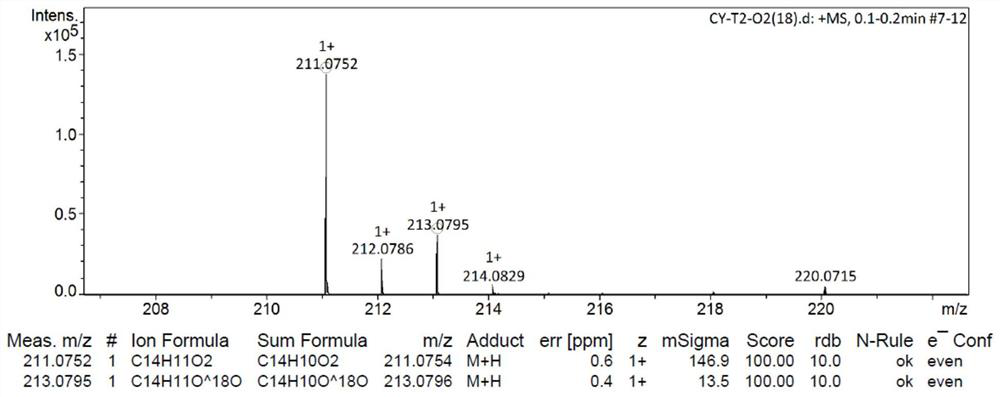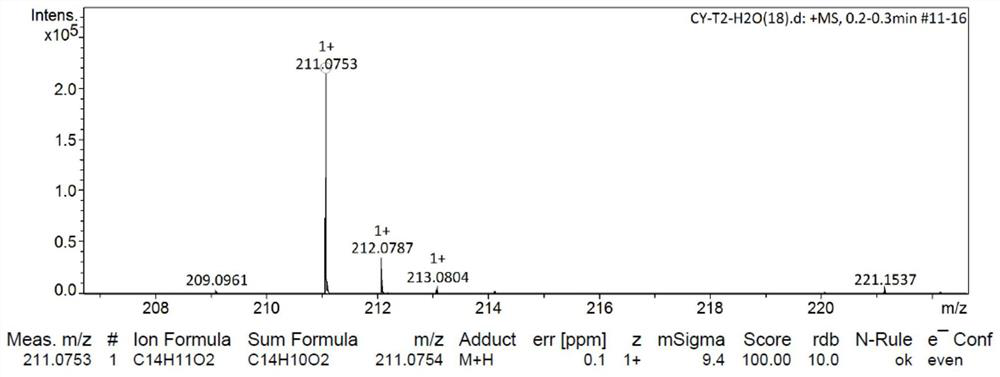Method for preparing aromatic alpha-diketone compound through electrochemical oxidation
A compound and electrochemical technology, applied in the field of preparation of carbonyl compounds, can solve problems such as harsh reaction conditions and toxic reagents, and achieve the effects of green and mild reaction conditions, avoiding excessive oxidation and passivation
- Summary
- Abstract
- Description
- Claims
- Application Information
AI Technical Summary
Problems solved by technology
Method used
Image
Examples
Embodiment 1
[0040] Preparation of aromatic α-diketone compound 1,2-Diphenylethanedione (Ⅱ-1), its structural formula is:
[0041]
[0042] The specific preparation method is as follows:
[0043] Add 0.25 mmol of compound I-1 (diphenyl ethyl ketone) as a reaction substrate to an electrochemical device (anode: a carbon rod with a diameter of 0.5 cm, a cathode: a platinum sheet with a specification of 1 cm x 1 cm x 0.2 mm), Add 0.125mmol additive triethylenediamine (DABCO), 0.375mmol electrolyte n-tetrabutylammonium iodide (nBu 4 NI) and 6mL reaction solvent acetonitrile, at room temperature with the current energization of 7mA, carry out reaction 6.5h, after reaction finishes, separate and obtain 39.4mg by silica gel column chromatography (eluent is sherwood oil:ethyl acetate=150:1) The yellow solid was the target compound II-1 (yield: 75%, Mp: 94.5-95.5°C).
[0044] 1 H NMR (600MHz, CDCl 3 ) δ 7.98 (dd, J = 8.4, 1.4Hz, 4H), 7.65 (t, J = 7.4Hz, 2H), 7.51 (t, 12Hz, 4H).
[0045] 13 ...
Embodiment 2
[0047] Preparation of aromatic α-diketone compound 1-(2-methoxyphenyl)-2-phenylethane-1,2-dion (II-2), its structural formula is:
[0048]
[0049] The specific preparation method is as follows:
[0050] Add 0.25 mmol of compound I-2 (1-(2-methoxyphenyl)-2-phenylethanone) as a reaction substrate to an electrochemical device (anode: carbon rod with a diameter of 0.5 cm, cathode: specification 1cm x 1cm x 0.2mm platinum sheet), add 0.125mmol additive triethylenediamine (DABCO), 0.375mmol electrolyte n-tetrabutylammonium iodide (nBu 4 NI) and 6mL reaction solvent acetonitrile, at room temperature with the current energization of 7mA, carry out reaction 6.5h, after reaction finishes, separate and obtain 44.4mg by silica gel column chromatography (eluent is sherwood oil:ethyl acetate=150:1) The yellow solid was the target compound II-2 (yield: 74%, Mp: 70.5-71.5°C).
[0051] 1H NMR (600MHz, CDCl3) δ8.03(d, J=7.7Hz, 1H), 7.93(d, J=7.7Hz, 1H), 7.61(q, J=8.7, 8.1Hz, 2H), 7.49(t ...
Embodiment 3
[0054] Preparation of aromatic α-diketone compound 1-(4-methoxyphenyl)-2-phenylethane-1,2-dione (II-3), its structural formula is:
[0055]
[0056] The specific preparation method is as follows: 0.25mmol compound I-3 (1-(4-methoxyphenyl)-2-phenylethanone) is added to the electrochemical device (anode: 0.5cm in diameter) as a reaction substrate carbon rod, cathode: platinum sheet with a specification of 1cm x 1cm x0.2mm), add 0.125mmol additive triethylenediamine (DABCO), 0.375mmol electrolyte n-tetrabutylammonium iodide (nBu 4 NI) and 6mL reaction solvent acetonitrile, at room temperature with the current energization of 7mA, carry out reaction 6.5h, after reaction finishes, separate and obtain 38.4mg by silica gel column chromatography (eluent is sherwood oil:ethyl acetate=150:1) The yellow solid was the target compound II-3 (yield: 64%, Mp: 60.1-62.2°C).
[0057] 1 H NMR (600MHz, CDCl 3 )δ7.96(dd, J=13.7,8.1Hz,4H),7.67–7.61(m,1H),7.50(t,J=7.5Hz,2H),6.97(d,J=8.4Hz,2H),...
PUM
 Login to View More
Login to View More Abstract
Description
Claims
Application Information
 Login to View More
Login to View More - R&D
- Intellectual Property
- Life Sciences
- Materials
- Tech Scout
- Unparalleled Data Quality
- Higher Quality Content
- 60% Fewer Hallucinations
Browse by: Latest US Patents, China's latest patents, Technical Efficacy Thesaurus, Application Domain, Technology Topic, Popular Technical Reports.
© 2025 PatSnap. All rights reserved.Legal|Privacy policy|Modern Slavery Act Transparency Statement|Sitemap|About US| Contact US: help@patsnap.com



